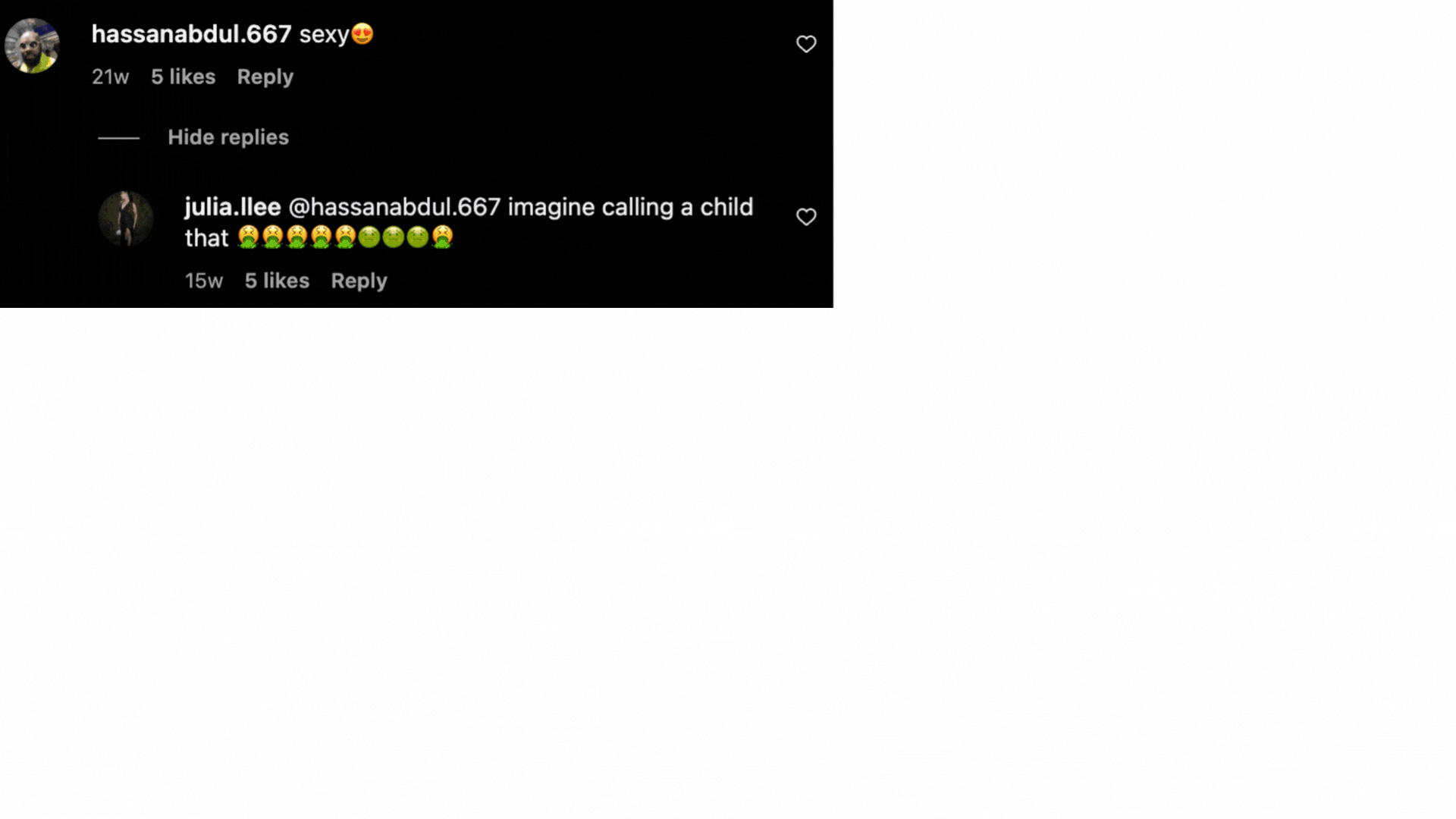Every moment of childhood — birthdays, tantrums, bath time — broadcasted to millions of strangers. For many children growing up in the age of social media, this is their reality.
According to a 2023 study by the National Library of Medicine, 90% of children appear in pictures or videos posted online before they reach the age of 2. All of these children are subject to the growing pervasiveness of sharenting.
Sharenting, a term attributed to the Wall Street Journal, is defined as the process of parents sharing content about their children on social media or other online platforms. This can include posting photos, videos, personal milestones, or updates about their child’s life. What starts as a harmless post can quickly spiral into a public spectacle, raising serious concerns about privacy, exploitation, and the disturbing attention of online predators. As parents turn their children’s lives into content, we must ask: how much exposure is too much, and what is the cost of sharing these innocent moments with the world?
The Psychological Impact on Children
The psychological effects on children exposed to the spotlight are becoming a growing area of concern. As more children face the public’s scrutiny, numerous ethical questions arise regarding the potential mental harm of being posted on social media.
Dr. Nina Kirz, clinical assistant professor of Child and Adolescent Psychiatry at Stanford University, discusses the broader psychological impacts of children being exposed to social media. She emphasizes that the influence of public opinion can be particularly detrimental, as children often find themselves under the scrutiny of strangers.
“The harmful effects of negative online comments on children’s self-esteem cannot be overstated,” Kirz said.
Kirz explains that the longer a child endures these hurtful remarks, the more they risk losing a foundation of healthy interactions to protect them.
“When parents start posting about their children before they’re old enough to consent, it can undermine the child’s ability to develop healthy social interactions and an understanding of social media boundaries as they grow up,” Kirz said.
This reality highlights the urgency of addressing the psychological toll that constant online exposure can take on young minds.
While children who post content themselves may retain some sense of control over their online image, Kirz stresses that when parents post on their behalf, it strips them of that autonomy.
“During adolescence, when young people already struggle with a sense of autonomy, not having control over their online presence can be particularly damaging,” Kirz warns.
According to a study from Microsoft, 42% of teenagers in 25 countries say they have a problem with their parents posting about them on social media, and many report feeling ignored when they request for this content to be removed.
As the allure of social media fame grows, many parents find themselves prioritizing the attention and validation they receive online over their children’s personal boundaries. The more engagement their content generates, the easier it can become to disregard their children’s wishes for privacy and autonomy.
A 2018 report about the sharing of children’s data shows that the average child will appear in 1,300 pictures posted by their parents before they turn 13. One reason for parents’ blatant disregard of their child’s digital autonomy for financial gain can be viewed through a statistic published by the Pew Research Center: videos featuring children under 13 tend to receive three times more views than other content.
This significant discrepancy can serve as a strong incentive for parents to continue sharing content, as higher engagement often leads to greater opportunities for income and recognition.
The Darker Side of Children on Social Media
The widespread popularity of content featuring children unveils a troubling side of social media, particularly when parents share images or videos of their own children online.
This could be due to the fact that there are as many as 500,000 predators on the internet at any given time according to Child Criminal Safety Center Home.
One calculation from an analysis of audience demographics by the New York Times revealed that among 5,000 accounts of underage girls, there were 32 million connections to male followers. This substantial audience boost can be advantageous for families posting content about their children; the larger the account, the more likely these families are to secure brand deals.
Take, for instance, the case of Wren Eleanor, a toddler with a recently deleted TikTok account who amassed 17 million followers on an account managed by her mother, Jacquelyn Eleanor. While their content initially appeared innocent, concerns quickly arose as viewers noticed inappropriate comments and an alarming number of saves on videos featuring the three-year-old. Critics accused Jacquelyn Eleanor of exploiting her daughter for fame and financial gain.
Although the content seemed relatively benign at first, public reaction revealed a darker side. Videos of Wren were saved hundreds of thousands of times, with search terms like “Wren pickle” and “Wren scandalous outfits” surfacing with disturbing undertones. For example, one video of the toddler eating a hot dog at a fair was saved 374,000 times, while another of her saying “I want a sucker” garnered 400,000 saves. The comments ranged from heart-eyed emojis to explicit, inappropriate descriptions of the child.
According to the same study by The New York Times, suggestive posts have a greater chance of receiving likes and comments, attracting a higher proportion of male followers.
Although Wren Eleanor’s account has since been taken down, countless other child influencers continue to attract similar attention.
 These are all comments posted under images of minors on Instagram.
These are all comments posted under images of minors on Instagram.
The Attraction of Predators
Reports of child pornography more than doubled between 2018 and 2022, this influx is largely attributed to the rise of social media. In 2023, Meta flagged almost 72 million pieces of content related to child nudity and sexual exploitation.
Thomas Smith*, a federal law enforcement and probation officer who works with the Federal Bureau of Investigation (FBI), regularly encounters sexual predators and witnesses firsthand how they exploit online platforms featuring children. He explains how child sexual abuse material (CSAM) has transitioned to digital spaces.
“Historically, child exploitation and pornography were exchanged physically, but now it’s predominantly online. Most federal investigations we handle involve predators using platforms like Snapchat and TikTok to distribute and receive CSAM,” Smith said.
Many families may think they are sharing innocent moments of their child, but this content can unintentionally contribute to the growing issue of CSAM on social media.
“Even when children are posted in relatively innocent ways, such as dancing or wearing modest clothing, it can still draw unwanted attention from predators,” Smith said.
Despite parents’ best efforts to protect their children by ensuring they wear modest clothing and avoid potentially suggestive behavior, these precautions may not be enough.
There has also been an increase in predators using a child’s likeness to create sexually explicit content through artificial intelligence. In an October 2023 report, the Internet Watch Foundation found more than 20,000 AI-generated sexual images of children that were posted on just one forum on the dark web in a one-month period in September, demonstrating the massive risk that this new technology introduces.
Predators often exploit seemingly innocent videos to satisfy their urges, but their behavior can escalate.
“It often starts with a harmless-looking account where the predator interacts with the child through direct messages or comments. Eventually, their behavior worsens as they attempt to contact the child directly,” Smith said. “In their search for more, they often seek content where the child is wearing clothing that could be interpreted as scandalous, such as swimsuits or revealing outfits.”
This behavior can lead predators down a darker path, actively seeking out CSAM.
Though many parents may not realize how their child’s content is being misused, some knowingly embrace the attention—whether negative or positive.
“There’s a cycle of social media attention, and many parents, even with good intentions, can get caught up in it,” Smith said. “Once parents start receiving likes and positive feedback, some feel compelled to post more frequently. While not all parents act this way, the allure of attention and financial gain can push some to continue posting, inadvertently attracting the wrong audience.”
Smith believes parents bear significant responsibility, though he acknowledges the gray area regarding the role of social media platforms.
“There’s no effective way to monitor whether parents have ill intentions or not,” Smith said.
Since social media platforms profit from this content, it can be difficult to determine if there is intentional exploitation at play.
The Risk of Child Trafficking
According to Screen and Reveal, More than 80% of child sex crimes start on social media. The rise of these platforms not only exposes children to predators but also increases the risk of human trafficking.
In 2020, data from the National Human Trafficking Hotline reported a 125% increase in traffickers recruiting through Facebook and a 95% increase via Instagram compared to the previous year. Elina Acosta, the statewide human trafficking task force coordinator in Georgia, highlights how traffickers are increasingly drawn to content featuring children.
“Traffickers have adapted well to online platforms for recruiting and grooming victims,” Acosta said. “Especially after the pandemic, we’ve seen a significant rise in traffickers using online sources to recruit, groom, and attract buyers.”
According to the National Society for the Prevention of Cruelty to Children, nearly 34,000 online grooming crimes against children were recorded in the last six years. Between 2020 and 2023, 6,350 offenses involving sexual communication with a child were reported — an 82% increase from 2017-2018. More than 5,500 of these offenses targeted younger children, with those under 12 accounting for a quarter of the cases.
Acosta warns that social media has made it easier than ever for traffickers to identify and target children.
“Even content that seems innocent can attract the wrong kind of attention. Parents must be aware that every post has the potential to be seen by someone with harmful intentions, especially if privacy settings aren’t strict,” Acosta said.
Acosta also highlights the types of content traffickers tend to exploit. While overtly sexual photos or videos are an obvious concern, traffickers often seek out more subtle signs of vulnerability.
“It’s not just about suggestive clothing,” Acosta said. “Traffickers look for cues of vulnerability, such as a child appearing visibly upset, frustrated, or isolated. These cues can make it easier for them to manipulate or groom their victims.”
Many parents remain unaware of how their social media posts could compromise their child’s safety.
“This doesn’t necessarily mean parents have bad intentions; they may simply not understand the risks. Even something as innocent as a video of a child looking upset can be misinterpreted and exploited,” Acosta said.
While Acosta advises caution, she emphasizes the importance of balancing safety with the desire to share family moments online.
“We don’t want parents to live in constant fear of posting about their families, but they need to be educated about the risks and think critically before sharing,” Acosta said.
Solutions and Parental Responsibility
Acosta underscores that addressing these risks ultimately falls on parental responsibility.
“Parents must consider the implications of what they post about their children. Even seemingly harmless photos can attract unwanted attention. If a post could put a target on your child’s back, it’s worth reconsidering,” Acosta said.
She advocates for open communication between parents and children about their online presence.
“Having conversations with your kids about what’s being posted is crucial,” Acosta said. “They need to understand their digital footprint and what it means for their identity.”
Respecting a child’s feelings about online content is vital for fostering trust.
“If a child expresses discomfort with a post, parents need to listen. Building this trust encourages open dialogue about online safety,” Acosta said.
Parents should educate themselves about the potential dangers that lurk online, such as the risk of CSAM and human trafficking. Many parents are unaware of how their seemingly innocent posts can compromise their child’s safety. By staying informed, parents can better protect their children from exploitation and manipulation.
However, there is difficulty in creating legislation to protect children online without infringing on First Amendment rights.
“We have to find a balance between protecting children and preserving freedom of expression. It’s a complex issue.” Acosta said
Acosta highlights the moral responsibility of individuals to say something if they feel something is wrong.
“If something feels off — like a child being exposed inappropriately — parents and bystanders should report it. Many hesitate, thinking it’s not their place, but reporting could prevent further exploitation and harm. It is essential for communities to stay alert and proactive in safeguarding children,” Acosta said
*Thomas Smith’s name was changed due to federal officers not being able to give their names publicly. This name is changed in accordance with Carlmont Media’s anonymous sourcing policy.



